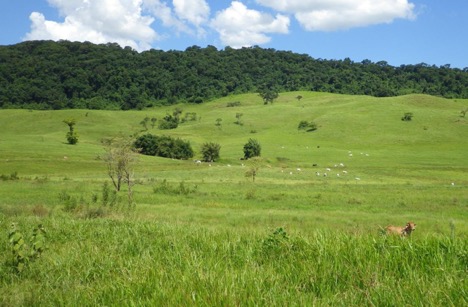Returning Forests, Often Ignored and Undervalued, Play an Increasingly Important Role in Climate Change Mitigation and Biodiversity Conservation in Tropical Landscapes
Chazdon, R. L. 2017. Landscape restoration, natural regeneration, and the forests of the future. Annals of the Missouri Botanical Garden 102:251-257.
Sometimes the best solutions to problems are right under our noses, but they are hard to see through lenses that are focused on other things. The natural regeneration of tropical forests is one example. Forests are regrowing on their own on farms, protected areas, unused pasturelands and abandoned crop fields in many tropical regions. They often spontaneously regrow as an unintended consequence of farmer decisions or government policies, so they are not viewed as forest restoration, which has been defined as an active intervention to assist the recovery of a natural ecosystem. But in fact, all forest regeneration, whether planned, planted, or seemingly lacking in purpose, can contribute to forest restoration by providing habitats for biodiversity and supplying many ecosystem services, including carbon storage, water quality, and timber and non-timber products. Relatively inexpensive interventions such as fencing, fire protection, enrichment planting, or weed control can assist and hasten the regeneration process. Low cost and high-biodiversity benefits of natural regeneration call for a new approach to harness this potential and to incorporate assessments of natural regeneration potential into planned restoration interventions in landscapes.
Championing natural regeneration is a bit like swimming upstream, however, as the economic benefits for farmers are not as high as for commercial forestry operations. Forest regrowth is often recleared to favor land uses the provide direct economic benefits, such as commodity-based agriculture. Understanding where and why natural regeneration potential is high can be used to target these zones as part of regional and landscape planning for forest restoration. Based on a balance of productive and protective land uses, forest and landscape restoration can offer benefits to farmers and ensure long-term beneficial outcomes of both active and passive restoration interventions.
Many future forests will grow up in predominantly deforested landscapes alongside forest remnants. These forests will be key habitats for forest-dependent species. But future composition of forests will also be impacted by climate change and other anthropogenic factors such as selective harvesting. Despite these uncertainties, both passively and actively restored forests will provide a new nexus for people and nature.

Today’s pastures may become tomorrow’s forests (photo by Robin Chazdon)
The PARTNERS Connection
In 2016, the 63rd annual fall symposium at the Missouri Botanical Garden focused on Ecological Restoration in a Changing Biosphere, organized by James Aronson and Leighton Reid. All of the presentations were published in an issue of the Annals of the Missouri Botanical Garden, featuring several papers by PARTNERS members.


